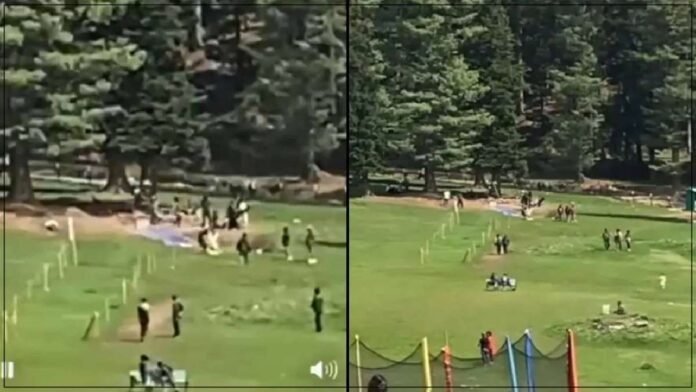
Key Points
- 12 days after the Pahalgam attack, the terrorists remain at large despite intensive search operations.
- Investigators have identified 15 local Kashmiri overground workers (OGWs) suspected of aiding the attackers; over 200 people have been detained for questioning.
- The attack was orchestrated by Lashkar-e-Taiba with direct involvement from Pakistan’s ISI and Army, according to NIA findings.
- Two main attackers-both Pakistani nationals-were in constant touch with handlers across the border and received logistical support from local OGWs.
- Security forces are conducting massive operations in dense forests and caves around Baisaran Valley, but the terrain and local support are hindering progress.
Shrinagar: More than 12 days have passed since the deadly Pahalgam attack in Jammu and Kashmir’s Baisaran Valley, where five armed militants killed 26 tourists in the deadliest civilian assault since the 2008 Mumbai attacks. Despite a massive manhunt and intensive investigation, the terrorists responsible for the massacre remain untraced, with security forces scouring dense forests and interrogating hundreds of suspects.
How the Attack Unfolded
On April 22, 2025, militants armed with AK-47s and M4 carbines targeted a group of tourists, singling out victims based on religion. The Resistance Front (TRF), an offshoot of Lashkar-e-Taiba (LeT), initially claimed responsibility, but later retracted. The attackers, including at least two Pakistani nationals and two local Kashmiris, had infiltrated the area weeks prior, blending in with tourists and conducting reconnaissance at multiple sites before selecting Baisaran Valley for the assault.
Local Support Network Exposed
Investigations led by the National Investigation Agency (NIA) have uncovered a sophisticated support system involving at least 15 local Kashmiri overground workers (OGWs) who allegedly provided shelter, logistics, and guidance to the attackers. Electronic surveillance intercepted chats and call records linking these OGWs to the Pakistani militants, and circumstantial evidence places several of them at the scene on the day of the attack. Three prime suspects have already been detained, with police searching for two others.
Authorities believe the attackers received arms consignments from Pakistan, which were hidden locally with the help of OGWs. The terrorists are suspected to have concealed their weapons and moved discreetly, avoiding detection for days before the attack.
Pakistan Connection: Lashkar, ISI, and Army Involvement
NIA’s preliminary report confirms that the attack was planned by Lashkar-e-Taiba with direct support and operational guidance from Pakistan’s Inter-Services Intelligence (ISI) and the Pakistan Army. Two central attackers, identified as Hashmi Musa (alias Suleman) and Ali Bhai (alias Talha Bhai), maintained constant communication with handlers in Pakistan, receiving instructions on logistics and execution. Forensic evidence and intelligence intercepts have traced digital footprints to safe houses in Muzaffarabad and Karachi.
Ongoing Manhunt and Security Operations
Security forces have launched large-scale search operations in the forests and caves around Baisaran Valley, Taranau Haptgund, Dawroo, and adjoining areas, but the challenging terrain and possible civilian support have complicated efforts. Over 200 OGWs have been detained for questioning, and more than 2,800 individuals have been interviewed as part of the probe. Investigators are also analyzing mobile tower dump data, satellite phone activity, and CCTV footage to track the movements of the suspects.
Despite several encounters and reported exchanges of fire, the terrorists have so far evaded capture, taking advantage of the dense forests and local support networks.
Bounty and Public Appeal
Authorities have announced a bounty of Rs 60 lakh for information leading to the identification or capture of the attackers, urging the public to come forward with any leads.
The investigation into the Pahalgam attack has revealed a complex web of local and cross-border support, highlighting the persistent threat of terror networks operating with both internal and external assistance. As the manhunt continues, security agencies remain on high alert to prevent further attacks and bring the perpetrators to justice.




















































